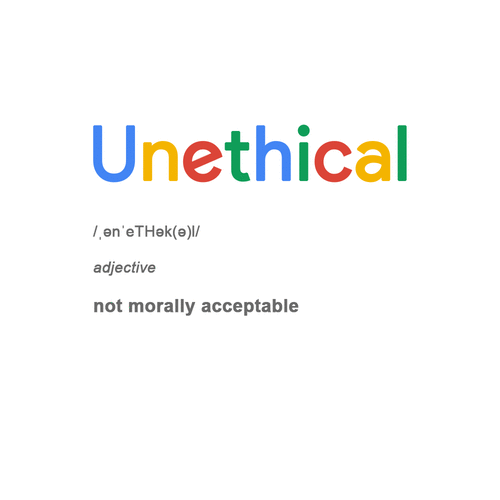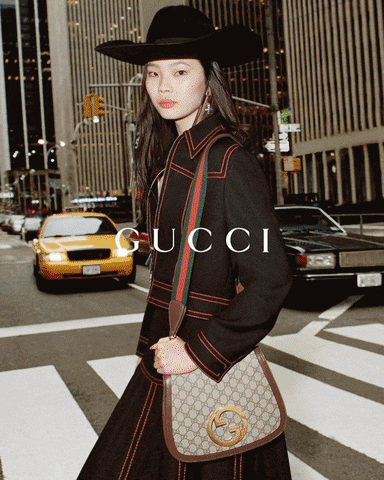Don't wanna be here? Send us removal request.
Text
Should consumers distrust by default?
It took Unilever's subsidiary in India 45 years to rebrand Fair and Lovely to Glow & Lovely. Such change was sparked by the Dark is Beautiful campaign but came more than a decade after the campaign launched.
The fact that a global and prominent company could not recognize discriminatory advertising by itself and complied with brand changes only after it was "forced to", speaks volumes to the fact that economic incentives often exceed ethical responsibilities. This and other scandals (i.e., Volkswagen clean diesel claim, L'Oreal clinically proven claim) inevitably make me wonder if, as a consumer, I should approach a default distrust mode against companies until proven otherwise.
Thankfully, social media has served as a powerful tool to provide constant and immediate feedback in the form of backlash towards companies that promote misleading social constructs (i.e., ideal body types), but the truth is companies should not rely on consumers to realize if they are doing something wrong ... more self-criticism is necessary, even if there is a clear "market opportunity".

1 note
·
View note
Text
Can luxury brands dodge copycats?
By their very nature, luxury brands are, and should be, aspirational for most people, given that the word luxury comes from the Latin lexus, which means excess. When it is an excess, we do not need it, but in many cases, some products offered by these luxury brands become so popular among social figures who can afford the expensive price tags that the product's desirability reaches an extreme among the general population.
Unfortunately, some people want these luxury goods no matter what, and this fuels a counterfeit market. It is common to find counterfeit designer handbags sold on the sidewalks of major cities like NYC or Paris, but it is also common to find very similar (if not identical) designs of luxury brands in mass market retailers.
Normally any brand would like to be popular because it leads to sales, but I wonder if this is still the case for luxury brands. If the 'high society' will inevitably continue to buy goods from luxury brands to differentiate themselves from the rest of the population, it seems that luxury brands should spend less on promoting logos and products and instead build on the intangible value of the brand such as aura and elegance to attract consumers.
I think Bottega Veneta is a great example of this: in 2021 they decided to move away from social media, yet their operating income has continued to grow vs 2021. Would following suit solve Gucci's or Louis Vuitton's counterfeiting problems? Not immediately, but perhaps gradually, and it could be less expensive than spending millions on anti-counterfeiting campaigns.

0 notes
Text
Wine has been undoubtedly one of the two most popular beverages for millenniums along with beer. Despite our vast interactions with wine, most of us have difficulty identifying a wine's quality.
Over time, some regions have become more well-known than others and such prestige guides our decisions when we have to buy a bottle because we have a hard time telling apart the subtle differences between brands that are produced with the same grapes.
Sadly, there is little brand loyalty and consumers tend to select based on price although many good quality wines are already available at accessible prices. To turn this trend around, companies could focus on creating stronger brand awareness by investing in simplifying the consumer experience.
As a consumer, I feel overwhelmed by the variety of products on the shelves but I would greatly value if a brand could nudge me while shopping by informing me what flavors I can find in their wines and how can I pair them with food.

1 note
·
View note
Text
Mapping the customer journey provides insights to improve the experience
A key focus in lean manufacturing is trying to eliminate ‘waste’ (e.g., defects, waiting times, unnecessary movements, etc.), which may be thought of as inefficiencies in the manufacturing processes. Typically, performing a Value Stream Mapping strongly helps identify where waste is in the system, the type of waste, and the impact of the waste on the system’s productivity. However, the decision on how to implement a solution for such waste requires further analysis such as a Root Cause analysis to make sure the source of the problem is addressed.
I think Customer Experience (CX) is analogous to a manufacturing process. When thinking about CX, the objective should be reducing ‘waste’ for the customer, and Customer Journey Mapping is a great tool with the potential to identify sources of opportunities. However, deciding how to act upon those opportunities requires deeper customer research, as suggested by Adam Richardson in his ‘Using Customer Journey Maps to Improve Customer Experience’ HBR article.
Companies that successfully focus on improving the overall CX will find competitive advantages compared to companies that only focus on improving the product or service because it is not only what it is offered, but also how it is offered.
I believe Netflix exemplifies this very well. At its core, both Blockbuster and Netflix offered the same product/service movie rentals, but Netflix focused on improving the CX throughout the entire journey. They understood that going to a store to pick up/return movies was not value-adding and they introduced a personalized recommendation system to enhance the experience.

1 note
·
View note